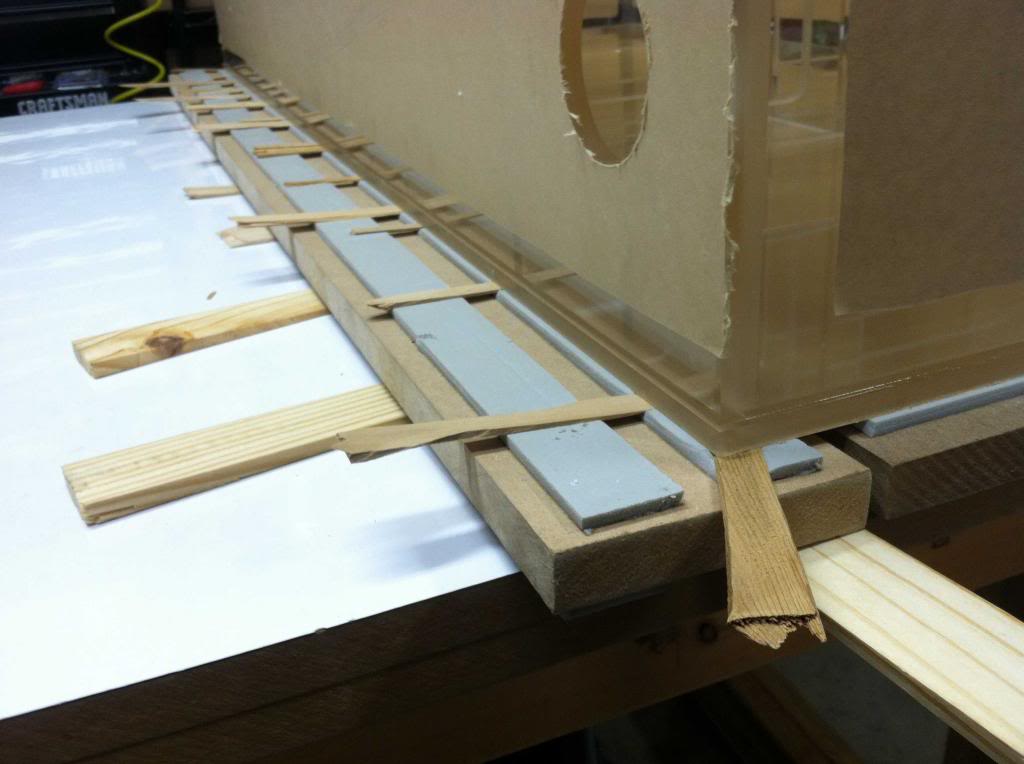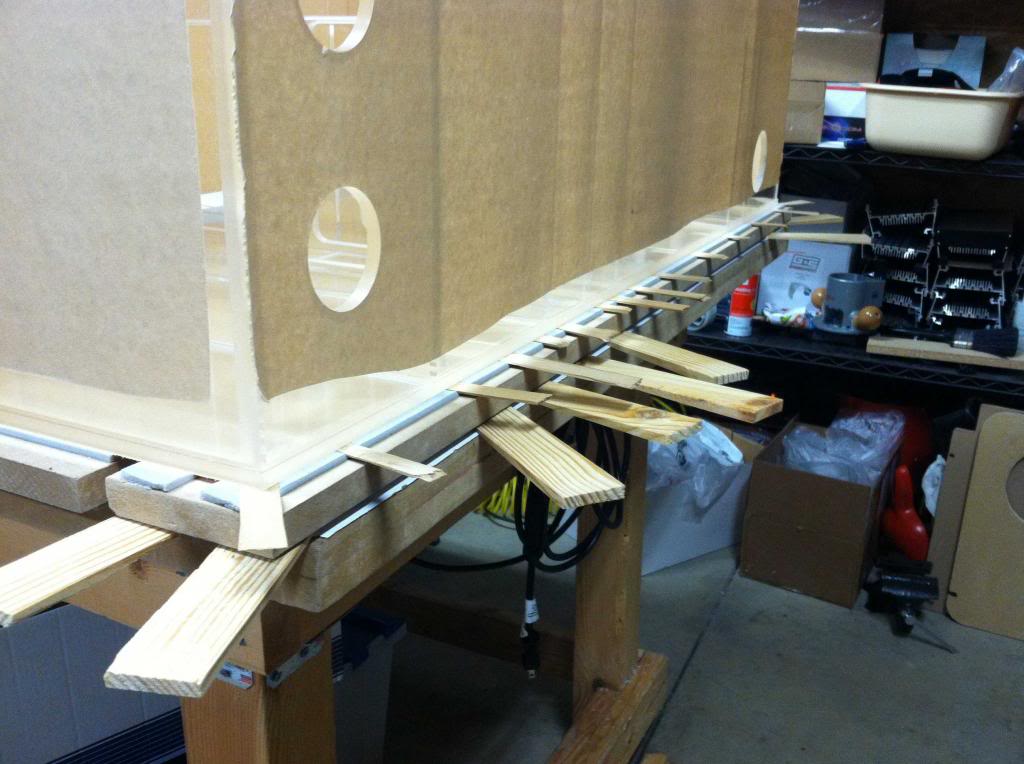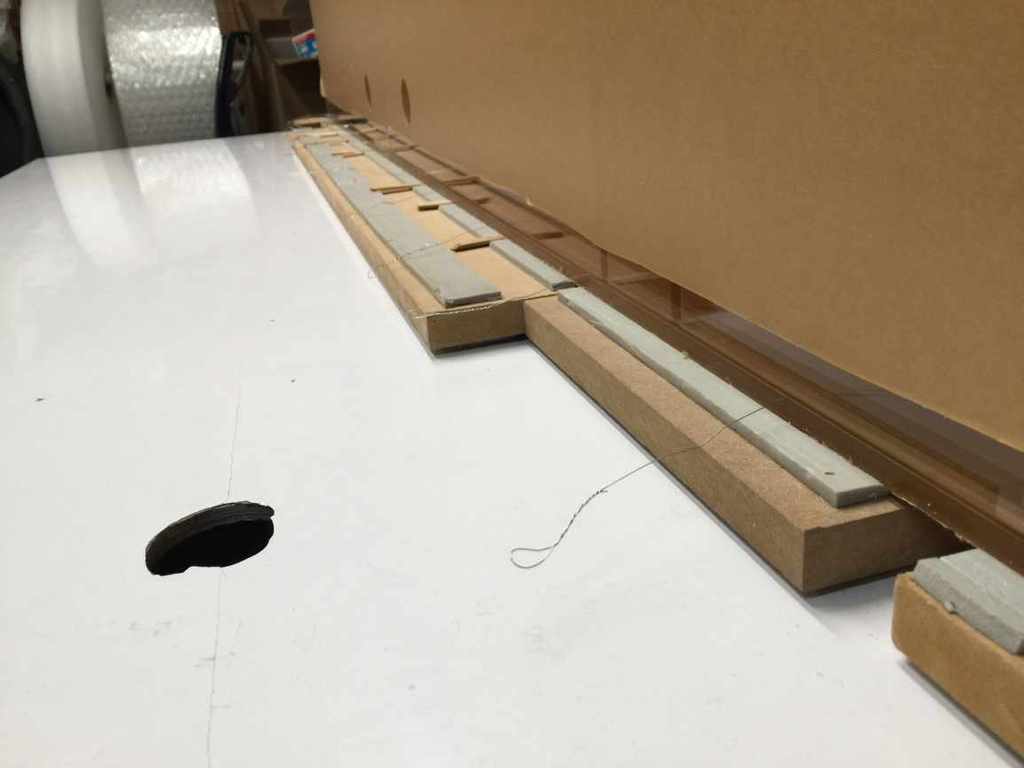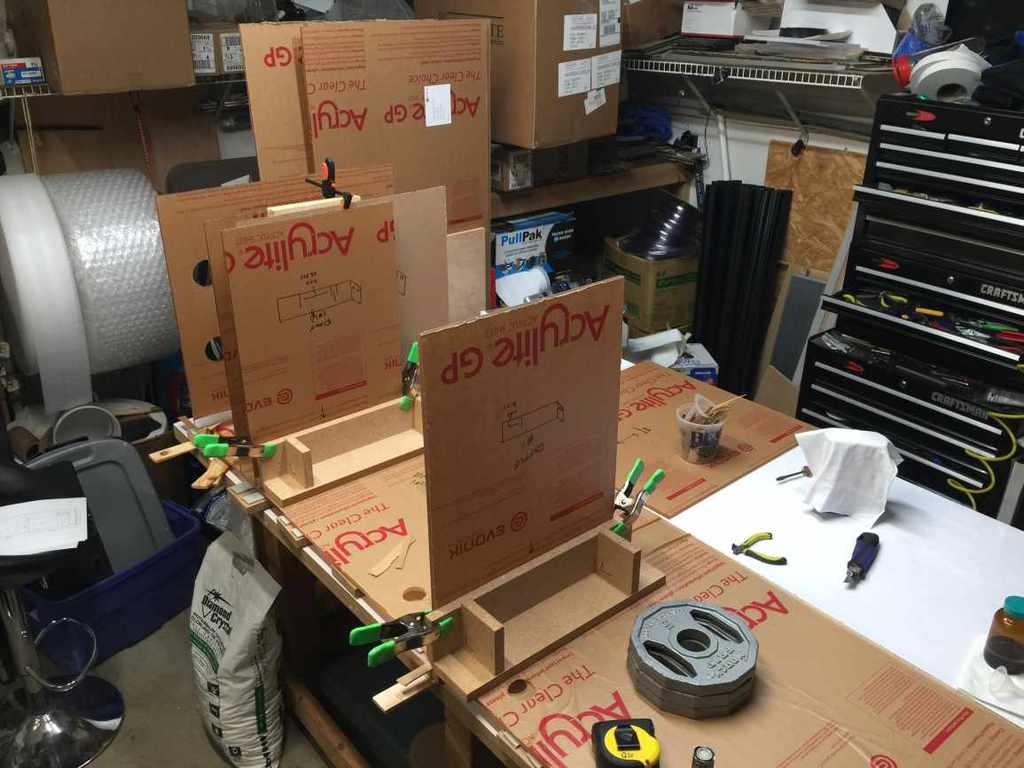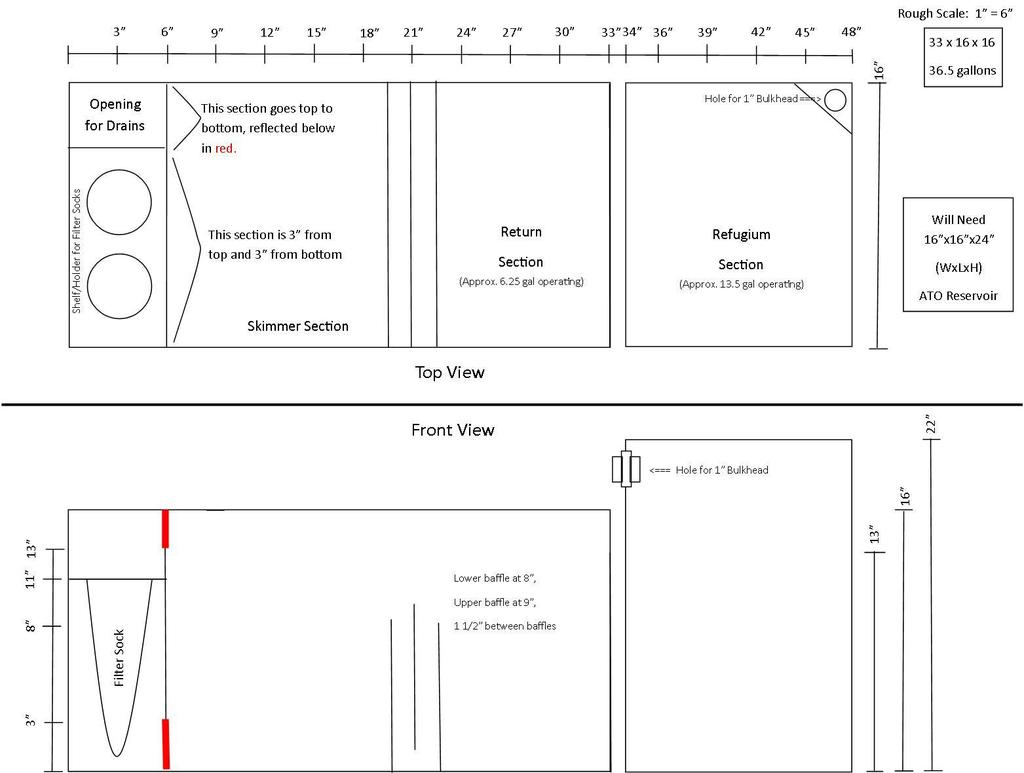Attached is a .zip file with the Cyro calculator. You can also get this from their website but you have to register I think
http://cyro.custhelp.com/app/answers/detail/a_id/133
I will stand slightly corrected, the thickness of the sheet depends on the length of the longest side and the height. Also, "closed" includes a brace, but that is still ambiguous as a perimeter-only brace is not equal to one with crossbraces (where required), and thickness also matters.
According to the Cyro calculator, 16" L x 24" H pushes you to 3/8" material. My gut tells me that it's not going to be so weak that it will blow out right away when you fill it or anything like that...and that you'll probably be OK. There might be a simple workaround to give you that warm fuzzy feeling that everything will really be OK. Let me think about it
http://cyro.custhelp.com/app/answers/detail/a_id/133
I will stand slightly corrected, the thickness of the sheet depends on the length of the longest side and the height. Also, "closed" includes a brace, but that is still ambiguous as a perimeter-only brace is not equal to one with crossbraces (where required), and thickness also matters.
According to the Cyro calculator, 16" L x 24" H pushes you to 3/8" material. My gut tells me that it's not going to be so weak that it will blow out right away when you fill it or anything like that...and that you'll probably be OK. There might be a simple workaround to give you that warm fuzzy feeling that everything will really be OK. Let me think about it





